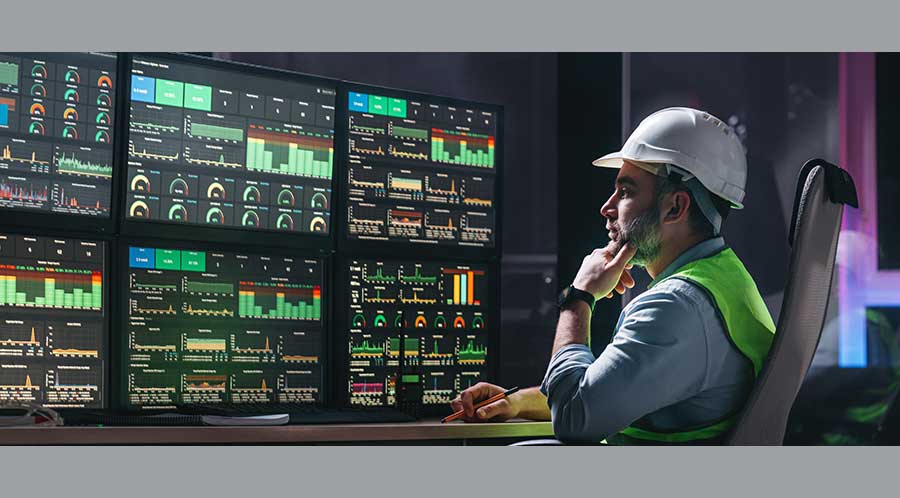How To Shop for Facility Software in Four Steps
Choosing the right software is not going to be easy or quick, but making a smart choice is possible.
By Naomi Millán, Senior Editor
When selecting facility management software, it is easy to start drowning in alphabet soup. But starting out by trying to understand the difference between IWMS, CAFM, CMMS, EAM, and on, is going about it the wrong way. It’s like trying to pack for a trip without knowing where you’re going. The most tricked out performance down jacket won’t do you much good in Aruba.
The other problem with just wading into the internet to search for facility management software as your first step is that you probably don’t have a broad understanding of the state of the art, and it’s easy to be seduced by pretty interfaces that don’t do much of what you need. Though this is improving, facilities software is usually not being developed by facilities people. And most facilities people have not been exposed to a truly robust CMMS, CAFM, or IWMS, says John Rimer, president of FM360. “So you have the blind leading the blind,” he says.
If you're reading this article, you're likely frustrated with your current situation and are trying to figure out what to do about it. You've been working off of spreadsheets, and they're just not cutting it anymore. Or you're working in a homegrown offshoot of what IT uses for their workorders and you're sick of just keeping track of the fires you're putting out. Or you have legit facility management software in place, but it's creating more hurdles than solutions. Whatever the reason, facility managers will need to take a measured multi-step approach to select the best facility management software solution for their organization. And in order to pick the right tool, it is critical to know what problem you're trying to solve.
Step 1: Conduct a needs assessment.
The first step is evaluating why what you have isn't working. List the gripes you have with the way things are currently set up, says Mayra Portalatin, senior professional at Facility Engineering Associates at the time of this interview and currently Vice President of Facilities Services at NVE. Is the current system not providing certain functionality because it simply wasn’t designed to do so, or is the capability there and is just poorly configured?
“What sort of intel do I need to get from a reporting standpoint?” is one way to put the question to yourself, says Portalatin. Figure out what kind of work needs to be tracked — workorders, space management, capital projects, etc. Are you trying to get all of your facilities management data into one spot? Do you already have a suite of other tools you like and use and just need to add some additional functionality, which may mean needing to find something that interoperates with what you already have? “People often go into it with, ‘We need something new because this is not working,’ but they don’t go through that thought process of what’s not working and what it would take for it to work,” says Portalatin.
While considering needs, be sure to involve stakeholders beyond the facilities department, such as real estate development, HR, or purchasing, says Rimer. Through these discussions, the interconnections between departments will come to light. Find out what kind of information needs to be shared, what the current process for getting that information is across departments, and how those processes might be improved with a new software system, he says.
Prioritize between needs and wants, and rank your needs from musts to negotiable, because no software system will be a silver bullet. "There is no single system that is going to be able to solve all of your needs," says Portalatin. "Sometimes when you're trying to look for that system that is potentially going to solve all your needs, you miss out on having a software that would be perfect for you because you're getting five steps ahead. Don't get the software that is going to go far beyond your needs, because it is going to be monumental to implement, and it might take years to get to where you need to go."
Step 2: Research all options.
Instead of trying to find a magical jack-of-all-trades software, look for software that plays well with others through open APIs, says Rimer. "Look at how well they can share data, both sending and receiving from other systems," he says. That will open up capability down the road, as needs evolve or other systems become available that it would be nice to interoperate with.
Also, make sure your data is exportable. Put it right up front in your RFP specs, says Rimer: “We own the data, and we can extract it at any time.” That way, should you need to migrate to different software down the road, you can import your data history into the new system. “It’s difficult to make that migration, but it can be done,” says Rimer. But not if you don’t own your data.
Shopping for facilities management software is a great place to leverage your network. "You really should be going out to your peers first, because they've gone through it," says Portalatin. Peers can steer you away from systems that haven't worked or point you towards some good bets. Plus, you can ask them whatever questions and know you'll be getting a frank answer based on in-field experience.
Once you have a short list of potential vendors, ask for client recommendations from the manufacturer as well. Ask them for clients of a similar size and function because you want to select a company that has experience with your type of organization. "You don't want to be the latest guinea pig," Portalatin says. "You want someone with enough experience that it's not going to be a lot of work for you. FMs don't have time for that. They want someone they can rely on that is going to help them get through this with as few hiccups as possible."
Step 3: Go on a few test drives.
A good way to find a good fit is to get hands-on with some demos. Software companies love to do demos, and you don't even have to have an RFP going before you can request one, Portalatin says. However, be sure to request a live demo, not a slide deck presentation. Ask to see what it looks like to work in the system, to create a work order, to print out reports, to see the status of something, how the PM workorders are set up, how to reassign a workorder, and on, says Portalatin.
Rimer agrees. He normally narrows the selection process down to three companies before requesting demos. "I give them a script and say, 'We want you to show our processes in your system,' versus them coming in and showing what they want to show me in their system," he says. See how many clicks it takes to complete a process. Is it intuitive? Seemingly little things, like a process taking three steps instead of seven, will matter over the course of years.
Stay wary during the demo, warns Portalatin. It can be easy to be swayed by cool functionality and lose sight of what you actually need the system to do. Also be wary of easy claims of compatibility, such as workarounds if systems don’t quite connect. “You have to be careful about those things," says Portalatin. "You’re unhappy about your current software that couldn’t do that, and now you’re going to get a new one that still can’t do it, but you can have a workaround? You’re going to have another piece of software that is not going to give you what you want,” says Portalatin.
Step 4: Take your time.
Facility management software is a big investment, so it's important to take your time and choose well. "This is not something where if it doesn't work out you can change your mind in a year or two," says Rimer. "This is going to be your lifeblood for a long time, so it had better be a good system."
And not only will it take some time to make a smart purchase decision, but it will also take some time, even a couple of years, for your team to get comfortable and proficient with any new software. It can be demoralizing to a facilities team to switch to a new system too often, so bring your team's feedback on that front into the equation as you're weighing the pros and cons.
Given all that hangs in the balance, it might be a good idea for facility managers to contract the services of a third party that can help them make sense of it all, especially if this is their first time implementing a facility management software solution at their organization. A consultant could be hired to walk the whole process, or for a more focused engagement during the needs analysis phase. Beyond alleviating the burden of making sense of all the options, a consultant can help keep things real, says Portalatin. "This person can act as a devil's advocate and ask if this is the software that you really need."
Whether you seek the council of a third party, or manage the process in-house, getting the right software in place to provide clarity and efficiency to facility processes is an imperative in today's world. And there's no need to reinvent the wheel or struggle along with a home-grown system. Off-the-shelf options abound. Just keep calm and shop on.
Email comments and questions to naomi.millan@tradepress.com.
Related Topics:












